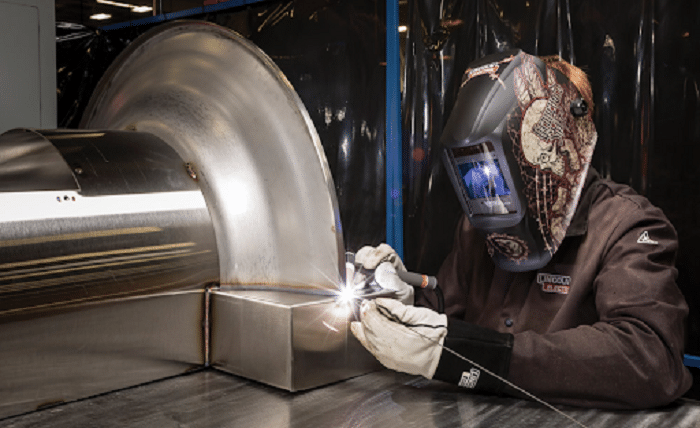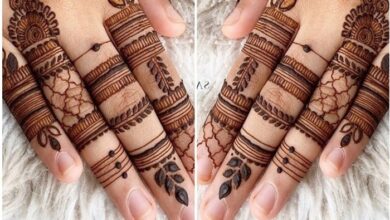MIG Welding Stainless Steel: Tips for Improvement with Proper Tools

Welding stainless steel using the metal inert gas method is an art with a lot of techniques convergence and technical know-how combined along with the right tools. So whether you’re an experienced metalworking craftsman or a welding rookie, achieving quality welds on stainless steel is about more than skill — it requires the correct recipe of tools and techniques.
Note: Discover the best stainless steel welding wire with us! As an authorized dealer of all major brands used by professionals, we offer the largest stock of welding supplies. Visit our website at https://www.udo.co.th/product/detail/yawata-316l-16 to explore our products or seek expert welding advice from our specialists. Don’t miss out on the highest quality and availability in the market!
This article will briefly discuss some tips that you need to improve stainless steel welding while highlighting the need for the right equipment — like quality Yawata 316L-16 stainless steel welding rods at UDO Welding — that you ensure that you would come out with a successful output.
MIG Welding for Stainless Steel -> Increased Damage
In essence, MIG welding — although known as Gas Metal Arc Welding (GMAW) when spoken of professionally — is the most popular way to weld stainless steel, as it is one of the most efficient and versatile welding methods out there. Process: A continuous wire electrode is fed through a welding gun where it can be melted by the heat of an electric arc and protected by inert gas (usually argon or a mixture of argon with CO2).
Benefits of MIG Welding Stainless SteelMIG welding, or gas metal arc welding, has a few specific benefits when you’re welding stainless steel:
Control: It delivers clean, controllable welding with low spatter.
Quick: During the entire welding process, unlike TIG welding, MIG welding is faster. Highly recommended for big projects.
Simple As [Semi-]Automatic: ‘The other way to explain is that semi-automatic is easier both for novices and for experts.
So Why is Stainless Steel Welding Such a Specialized Skill?
Unlike stainless steel which provides better corrosion resistance, good steel, and a beautiful surface. But along with these benefits come challenges. Incorrectly welding stainless steel can lead to warping, discoloration, or even failure of integrity. Key challenges include:
Thermal Conductivity – Stainless steel has a very low thermal conductivity meaning it is a very good heat retainer which increases the risk of distortion.
If the weld is left unshielded or under-shielded, oxidation can occur leading to unwanted consequences in its quality.
Material Thickness: Burn-through often happens at thinner stainless steel sheets, and you will need to exercise delicate control.
These obstacles can only be maneuvered using a combination of skill, welding rods, equipment, and process.
Why Choose the Right Welding Rods?
Choosing the Suitable Welding Rods – It is one of the most important factors in ending up better quality in MIG welding stainless steel. Welded with Yawata 316L-16 stainless steel welding rods priced on UDO Welding. Here’s why:
Excellent corrosion resistance: These rods were specially designed for stainless steel welding, making a weld less frenetic and resistant to corrosion even in extreme environments.
Flexibility: Great for everything from industrial projects to fine-detail work.
Ease of Use: They melt well, ensuring consistent weld quality with little spatter.
Durability – Welds made with these rods hold their strength and integrity for years.
Here’s an article to see what you need to know to use high-quality rods like Yawata 316L-16. You could use these rods to boost your welding designs and ensure your projects come out with a professional quality.
Strategies to Bettering Your MIG Welding Stainless-Steel؟
Prepare the Metal Surface
Wipe the stainless steel with a clean towel to remove dirt, grease, or oxide films. Using a stainless steel wire brush prevents contamination, as using a normal steel brush can transfer impurities.
Pick the Right Shielding Gas
An argon and CO2 mixture (most often 98% argon and 2% CO2) works well for stainless steel. The gas inhibits oxidation and facilitates a clean, stable arc.
Set the Correct Parameters
Set your welder according to the material thickness and that of the rod. For example:
- Sensitive swelling for thin sheets to prevent burn-through.
- It will apply higher voltage for thicker materials to deliver appropriate penetration.
Optimize Your Technique
- Keep a consistent hand position and a 10-15 degree push angle to improve visibility and arc control.
- Keep a moderate welding speed to prevent excessive heat input. Too much heat can warp stainless steel or discolor the welds.
Use High-Quality Consumables
Make sure that your MIG gun and wire feed system are loaded with an appropriate-grade tip and liners (this helps with wire feeding so that you do not only achieve a good weld but does not allow whatever to get stuck).
How Equipment Plays an Essential Role in Refined Welding Skills
Good technique should be matched with quality welding equipment. While this does not sound like an end in itself it will help to become better-manager of your time and could make your experience more enjoyable and increase your results, whether it is calculating time or results of an experiment, investing in trustworthy tools and consumables cannot go forgotten. With a reliable MIG welder, quality electrodes such as Yawata 316L-16 and ideal shield gas, stainless steel welding truly comes down to experience.
We pride ourselves on our variety of welding products specific for professionals and hobbyists alike only at UDO Welding. For stainless steel welding projects, their Yawata 316L-16 rods are among the best in performance, reliability, and cost-effectiveness.
Mistakes to Avoid When MIG Welding Stainless Steel
Surface Preparation Is Key: Contaminants on the base metal cause weak welds and porosity.
Wrong Gas Mix: Choosing the wrong gas can cause poor shielding and lead to oxidation.
Failure to control temperature: Excessive heat in stainless steel can warp it and ruin weld quality.
Using Poor Quality Equipment: Cheap rods and consumables will hold you back and create poor quality welds.
Avoiding these mistakes makes sure your welds are strong, clean, and professional-looking.
Conclusion
Improving your MIG stainless steel welding skills takes time, practice and proper tools. When you invest in consumables that are top quality, like UDO Welding’s Yawata 316L-16 stainless steel welding rods, you set yourself up for success. With proper surface preparation, parameter settings, and welding techniques, these rods provide outstanding results for your stainless steel projects
Check out UDO Welding today for their line of welding products and start perfecting your wire TIG welding skills with stainless. Having the right equipment is half the battle—begin your journey to mastering MIG welding stainless steel today!





